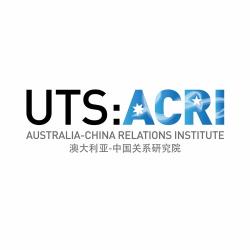Australia and the Belt and Road Initiative: Latest...
Australia and the Belt and Road Initiative: Latest developments
Guest: Dirk van der Kley, Program Director – Policy Research, China Matters
Host: Elena Collinson, Senior Project and Research Officer, Australia-China Relations Institute, University of Technology Sydney
Conceptually defined as a program of connectivity enhancement and written into the Chinese Communist Party (CCP) charter in 2017, the ambitious Belt and Road Initiative (BRI) is a key pillar of the People’s Republic of China’s (PRC) foreign policy agenda. But the BRI is the subject of strong criticism, seen as it is as Beijing’s strategy to erode the liberal rules-based order and reshape regional norms in its own favour, as well as allegations of ‘debt-trap diplomacy’. In Australia, the federal government’s response thus far might be characterised as ‘cautious openness’, having expressed in-principle support for greater infrastructure development in the region and a policy of engagement on a case-by-case basis. But there are numerous concerns around project governance and transparency held not just by Australia, but by many other countries who have yet to substantively engage with the BRI.
What are the strategic interests underlying the BRI and how successful has the BRI been in realising them? How has the BRI evolved over the last few years? The BRI also includes a technological dimension – the Digital Silk Road – that seeks to shape norms in the regulation of emerging technologies. What has the impact of this been and what are the implications for Australia? How has Australia responded to the BRI? Does its Pacific pivot compete with or complement the BRI? What other policies might Australia consider adopting to navigate the BRI and the challenges that it presents? Dirk van der Kley joins Elena Collinson to discuss these questions and more.
With actors in a broad swathe of domains being incentivised to operate under the BRI umbrella, the BRI’s scope has grown such that it is sometimes difficult to distinguish the BRI from the PRC’s broader foreign policy. The BRI simultaneously serves its stated objective of connectivity enhancement, the PRC’s domestic interests by helping PRC companies expand their global operations and the PRC’s strategic interests by increasing BRI countries’ political alignment with the PRC.
While external criticism is unlikely to change these objectives, there is a level of awareness in Beijing that oversight of some BRI projects has been ineffective for both the projects’ and the PRC’s strategic goals. But it is also unlikely to change financing opacity, although it may be partly responsible for a decrease in financing from the PRC.
The uptake of the BRI’s technological dimension, the Digital Silk Road, can be explained by the PRC’s capability to provide beneficial technology on a cost-effective basis and the economic attractiveness of technology projects compared to infrastructure like roads, as underscored by the fact that Huawei accounts for a larger monetary share of investment than China Railway Corporation. The main implications of concern are the risk of backdoors in PRC telecommunications technology, or dependence on PRC technology increasing the risk of coercion.
Australia’s response to the BRI has consisted of two aspects: complementary measures like expanding the Pacific Labour Scheme (PLS), and measures which selectively compete with the BRI such as on investment in undersea cables for security reasons. Additional steps Australia could take include expanding the PLS further and establishing a resilience fund to assist Pacific Island nations with climate change adaptation. There have been few cases of Australia-PRC cooperation on BRI projects, despite a memorandum of understanding (MoU) on third-country Australia-PRC cooperation on BRI projects signed in 2017.
An Australia decision to ‘sign up’ to the BRI should be predicated on whether specific benefits are offered – these could include upgrading the China-Australia Free Trade Agreement (ChAFTA) to expand market access for Australian goods such as sugar and rice. ‘Signing up’ via a MoU lacking such concrete benefits would otherwise have minimal strategic impact for Australia.
Australia might also consider coordinating with Japan and South Korea to expand the PLS to all three countries, and increasing Australian participation in regional dialogue on governance of emerging technologies. While Australia can bilaterally expand the PLS, a PLS coordinated with Japan and South Korea will depend on these countries’ receptiveness. An ASEAN New Technologies Forum, in conjunction with the PRC, Japan and South Korea, is a potential mechanism through which Australia could shape norms around cyber-governance or data towards the ‘free and open’ model.
(Mr van der Kley’s policy recommendations are drawn from a brief authored for Australian public policy initiative, China Matters, available here).
Summary written by Michael Zhou, Project and Research Officer, Australia-China Relations Institute, University of Technology Sydney.
Technical production by Amy Ma, Communications Officer, Australia-China Relations Institute, University of Technology Sydney.
Theme music by Sam J Mitchell.

